
|
The world of non-commercial film and A-V |
Events Diary | Search | ||
| The Film and Video Institute | | ||||
The making of Coffee Break
Meet ... Urbain Appeltans
his film Coffee Break won a Gold Standard Award at BIAFF 2007
He won the Daily Mail Trophy in 2006 with Hannah which he made with Magda Verbist
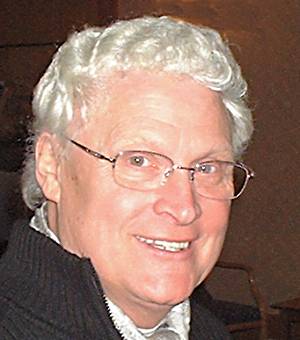 |
When you meet the Belgian filmmaker Urbain Appeltans it easy to see where
the humanity in his films comes from: the man himself. One has to resort
to trickery to buy him a refreshment and he is equally generous with his
time and stories. (His latest film was screened at BIAFF as Coffee
Break but will be renamed Coffeetime when it reaches
Unica 2007.)
INTERVIEW by Romy van Krieken What is the Collective 05? Collective 05 was formed in 2005 by five men from the same filmclub. We all have a vast experience and decided to make films together. Each makes his own film and the others help him which leads to amazing results. Hannah and Veronique are both from our collective and going to Unica! There are no internal conflicts; we laugh a lot and there is a high level of technical expertise. That is important to me, as is a good story. The more people on my set the better. I would love to make an epic with lots of extras. Hannah premiered on a 4 x 6 meter screen and now I even dream of filming on 35 mm … Hannah won six of its seven festivals. Is there a risk of taking it easy? You make films for the audience, not for the juries. I am always in the audience because only then can you tell if a film works. Besides, not everything is a success. Last year I made Hypnosis but didn't release it as it didn't feel right. In the collective you work on each other's film as if it is your own, you always want to get better and that's why you never run the risk of resting on your laurels. |
What is the hardest thing to do?
Getting the right actors. Then again, sometimes it is dead easy. The children in Hannah for instance were our neighbours' grandchildren! Or I stop people in the street. For the lead in Dilemma I saw a woman walking by whom I approached. Another time I saw an old man on his bike while I was in my car: I reversed immediately. The beauty is when people discover what they are capable of because at first they always claim that they will be no good.
When did you first get hooked on film?
As an eight year old I went to the cinema every Sunday and fantasised about a way to get into a film. That's where years later the idea for Cinemascope originated. In military service I was stationed in the cinematographic department and got an education in editing and camera operating. I was even discharged with days of leave left, because even in weekends I stayed at the base! After that I graduated from the film school in Brussels but back then there were hardly any jobs so I went to work at a bank.
When did you start making films?
I have been filming since I was eighteen and I hope to continue doing so. In 2005 I was diagnosed with colon cancer and it was as if someone dropped a bomb on me. But film helped me recover. I made Hannah and Cinemascope during the chemo, with a colostomy and everything. It helped me through and it turned out to be my most productive year. With the collective we made seven films. We formed a bond that will never be broken.
What is the key to your success?
My films always have hope, a positive message. It's about the simple life, human relationships and how each age has its charm. In Hannah we all recognize the vulnerability of the child that tries to express herself without words: she gets a flower and throws it to the floor. Simplicity is the key to my success. It is about telling a story with the camera, about people relating to each other, no big spectacle, just nice and sweet.
COFFEE BREAK
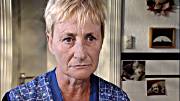 |
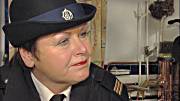 |
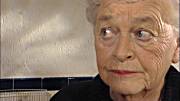 |
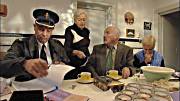 |
How did the idea for Coffee Break come about?
My wife loves to read detective novels and she had the idea. We started talking about it, told the actors about it and they filled in the dialogue - something which I am not very good at. Give me a camera and I can do anything, but not with a pen. The theme of the film is that there is still no equality between the genders. Men are still diametrically opposed to women and at the end of the film the women side with each other.
What is the best compliment for Coffee Break?
People who tell me how happy they are that the woman doesn't get turned in. The challenge was to get the audience to feel for the culprit, while she herself does or says very little. I also wanted to make a film in a single space and 85 percent of the film takes place in the kitchen. Putting a few people in a small space and letting a story unfold is difficult. It is hard to summon up emotions and technically you are restricted in your movements.
How do you work?
As much as possible I plan all the shots in sequence because than you feel the actors grow. All the lines, camera angles and lighting plans I jot down before I begin. I like using visual language: like when the men in Coffee Break wonder what that woman will do without her husband and the women exchange a meaningful look with each other. Lighting is also very important to me, because making a film is creating an atmosphere. Coffee Break is soberly lit but it does have shadows on the wall. I use filters to create light and shadow so the characters come to the foreground.
What do you do at the Limburgse videofilmers club?
When I became chairman four years ago there were some things I wanted to accomplish. For instance I think film should have no boundaries so I try to bring the Dutch and Belgium province of Limburg together. This year forty people from the Netherlands came to our club open day in Belgium. Because we served an English breakfast at half past seven: there were 165 people in the early Sunday morning! As a result the room was packed for the very first film of the day. Usually if your film is first there will only be ten people to see it. I wanted to do something about that. It also works well if you start the day with a film everyone wants to see. It is not just the breakfast: for 20 euros you also get lunch and dinner. That's why more often than not partners come along and I think that is important, because this is a hobby that can really consume you.
Any plans for the next film?
In November I will make another film with Wim and San, the couple in Cinemascope and Coffee Break, based on their own story-idea. But first we will shoot a film in July about a guy who falls in love with a deaf girl and there is another girl that wants him as well. We are looking for actors but they have to be able to swim because the film has an underwater scene ...
| Romy van Krieken - a film journalist in the Netherlands and one
of the BIAFF 2006 final jury interviewed the film maker for us and translated
the text from Dutch to English.
Romy writes for Veronica magazine which is linked to the radio and tv station of that name. She looks after their film website too. She is on the board of the Dutch Film Critics Circle. Her collection of film books and other paraphernalia is legendary. She takes part in many film festivals, sometimes acting a translator thanks to her language skills. |
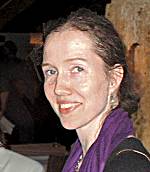 |
Share your passions.

Share your stories.